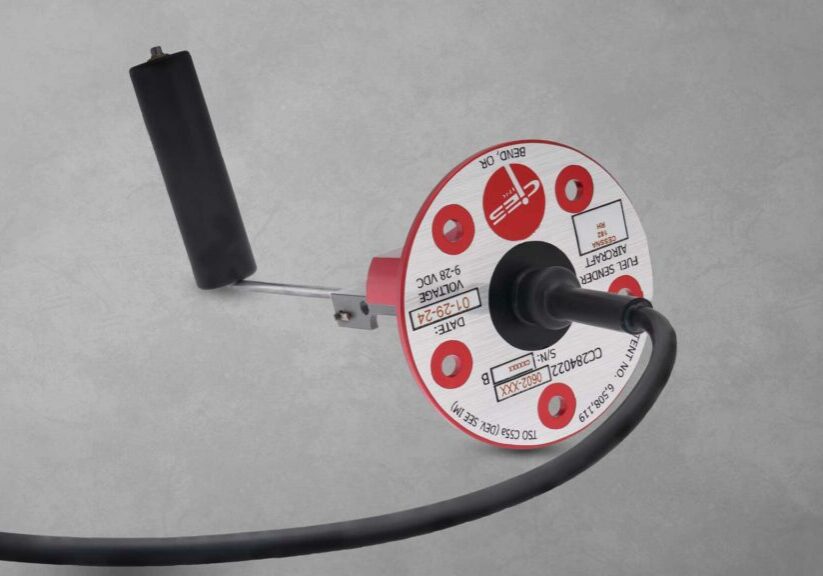- All
- Company News
- Fuel Sender Replacement
- In-Service Difficulty Reports
- Installation Instructions
- Magnetic Advantages
- Press Releases
- Product Mentions
- Sponsored Pilots
- Testimonials
Rethinking Fuel Tank Calibration: Why “Reverse” May Be the Right Direction
Overview While most STC installation manuals — including our own — instruct you to calibrate fuel tanks starting from empty to full, there are real-world cases where reverse calibration (starting full and draining in known increments) delivers better accuracy. For bladder-style fuel tanks — especially in certain Beechcraft and Cessna aircraft — this method better…
Top 5 Fuel Sender Problems Solved with Advanced Technology
For aircraft owners and pilots, reliable fuel management is crucial. A malfunctioning fuel sender—the device that measures and transmits fuel level data to the cockpit—can lead to inaccurate readings, unnecessary stress, or even critical safety issues such as fuel exhaustion. Fortunately, advancements in fuel sender technology have made significant strides in addressing these common challenges.…
CiES and Raisbeck Engineering Collaborate on Caravan Fuel System Upgrade
At CiES, we’re redefining fuel quantity measurement with our industry-leading magneto-resistive technology. Now, in collaboration with Raisbeck Engineering, we’re proud to introduce an advanced fuel quantity indication system specifically designed for the Cessna 208 Caravan. This state-of-the-art solution delivers unparalleled accuracy and reliability, enhancing fuel management and overall safety for Caravan operators. Key Features: 1.…
Understanding Aircraft Fuel Level Systems
Accurate fuel level measurement is a critical aspect of aviation safety and efficiency. It ensures that pilots have the information they need to manage fuel reserves effectively, avoid fuel exhaustion, and plan their flights with precision. However, many pilots and aircraft operators face challenges and misconceptions regarding fuel level monitoring. Some common issues include unreliable…
What is the Potential of Sustainable Aviation Fuel?
As one of the fastest-growing sources of greenhouse gas emissions, the aviation sector faces mounting pressure to reduce its carbon footprint. Enter Sustainable Aviation Fuel (SAF) – a promising solution that could revolutionize the industry by significantly cutting emissions and paving the way for a greener future. This is one reason why CiES decided to…
How CiES Fuel Senders Saved My Life
I have a 1956 Cessna 182. Serial number 10! When I refurbished the airplane a few years ago, I took out the old wing root sight gauges. During my G3X upgrade, I installed the CIES senders in their place. Now I can see the fuel levels on the display right in front of me. I flew to…
Unleaded Fuel? No Problem!
The recent demonstration by the AOPA showcased the ongoing transition towards unleaded aviation fuel, highlighting a significant step in sustainable aviation. On October 31, AOPA President Mark Baker piloted a Beechcraft Baron, which uniquely ran on two different types of fuel: the newly FAA-approved 100-octane unleaded G100UL fuel in one engine and the traditional avgas…
How to Test a Fuel Sender
Experiencing a malfunction in your aircraft’s fuel sending unit can be a major safety risk, especially during flight. It could lead to incorrect fuel readings, which might force you into emergency procedures you hoped to avoid. Imagine taking off for a long cross-country flight only to find yourself low on fuel much sooner than anticipated!…
Why Frequency Output for Fuel Level Indication?
CiES initially adopted a frequency output for their sender units in response to Cirrus’ specific requirements. Cirrus was utilizing the Garmin GEA71, which already had its analog inputs fully engaged. The consensus between Cirrus and Garmin was that a digital signal would enhance fuel quantity measurement. With over a decade of use, CiES has validated…
CiES Takes Flight to a New Location in Bend, Oregon
Bend, OR – Exciting developments are on the horizon for CiES, a pioneer in aviation technology! We’re thrilled to announce we’ve moved to 63049 Lower Meadow Drive in Bend, Oregon – the former site of Kirby Nagelhout Construction Co.
Maximize Aircraft Fuel Management with CiES Digital Fuel Sensors
In Larry Anglisano’s article on October 25, 2023, “Digital Fuel Sensors: Installation-Critical,” the importance of accurate fuel quantity measurements in aircraft is highlighted, especially during primary engine instrumentation system retrofits. While it may be tempting to save costs by using existing OEM analog fuel tank sensors, this often leads to compromised accuracy and reliability. The…
What is a Fuel Sending Unit? Technology Benefits & Disadvantages
What is a fuel sending unit? An aircraft fuel sending unit (also referred to as a fuel sensor, fuel sender or fuel probe) is a crucial component for measuring fuel quantity. In a modern system, the fuel sending unit employs advanced technology to accurately measure and transmit fuel level data to the cockpit instrumentation, providing…













